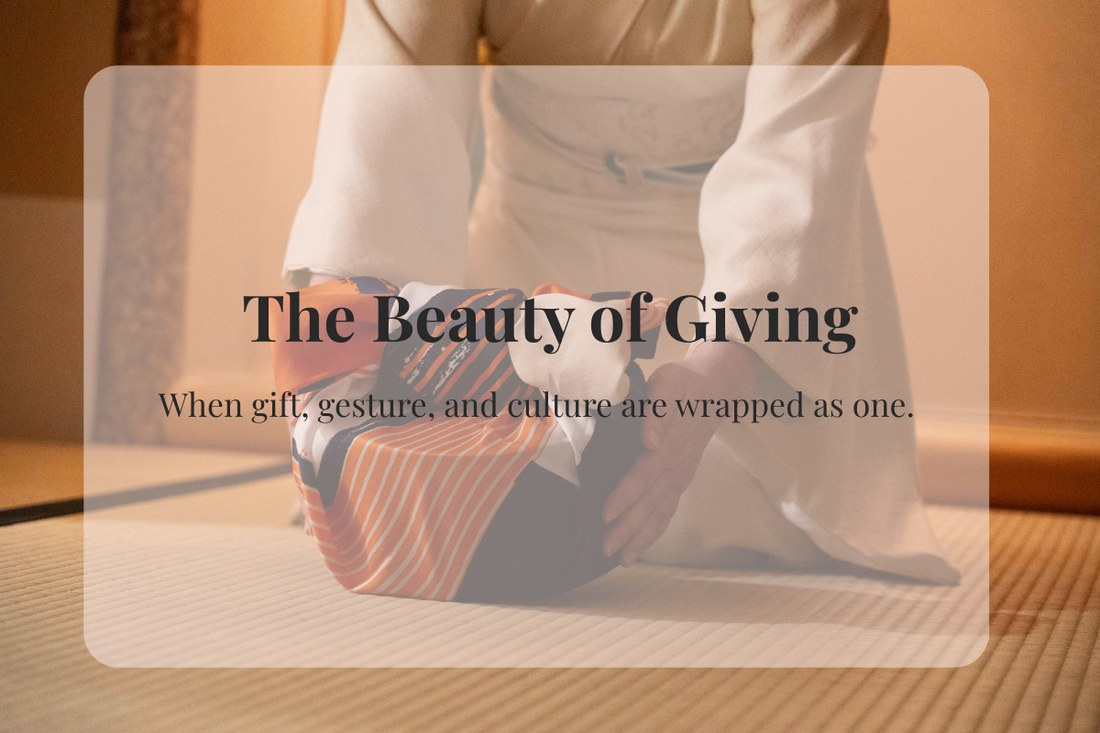
Wrapping as a Way of Life – A Decade with the Furoshiki
Furoshiki, the traditional Japanese wrapping cloth, naturally evolves with time and place.
But the more I’ve come to know it, the more I feel that it’s not just a tool—it holds layers of meaning rooted in Japan’s spirit and aesthetic.
My Encounter with Furoshiki
I first encountered furoshiki nearly ten years ago in Kyoto.
I was immediately captivated by the softness of the fabric, the beauty of the designs, and—above all—the heartfelt intention behind the act of wrapping.
That moment set me on a journey. I began researching, visiting craftspeople, listening to their stories, and eventually began creating furoshiki myself. Now, almost a decade has passed since that first encounter.
Wrapping Cultures Around the World
Furoshiki may be uniquely Japanese, but wrapping cloths exist across cultures.
Each one reflects the way of life and values of its region.
For example:
-
Bojagi (Korea)
Traditionally made from patchwork silk or hemp, often used for gift-giving. Bojagi carries the meaning of wrapping fortune. -
Kanga (East Africa)
Brightly colored printed cotton cloths with Swahili proverbs. Used for clothing, gifts, and as a way of expressing messages or sentiments. -
Aguayo / Manta (South America)
Colorful woven cloths used to carry goods or children. Patterns and colors vary by region, reflecting the Andean cultural identity.
These cloths are more than functional—they embody the beliefs, stories, and beauty of their respective cultures.
Likewise, furoshiki is a reflection of Japanese values: harmony, consideration, and elegance in simplicity.
Beyond Appearances
In recent years, furoshiki has gained international attention as a sustainable and stylish alternative to disposable packaging.
This growing awareness is wonderful to see—but there’s also a side of it that raises concern.
Some products marketed as “Japanese furoshiki” are actually mass-produced overseas. Others claim to be “hand-printed” when they’re mechanically printed.
While they may resemble traditional furoshiki on the surface, the background—the craftsmanship, the intention, the cultural spirit—is not the same.
That difference matters. Recognizing and sharing those distinctions has become an important responsibility, not just for me, but for anyone who values authentic craftsmanship.
At the same time, we are moving in the opposite direction—one by one, small workshops are quietly disappearing.
Perhaps this too is part of the flow of a globalized, efficiency-driven economy. But I can’t help believing that the quiet beauty of handcraft—the very work that first struck me so deeply—still has the power to resonate with people.
And so I continue this work, hoping that the spirit of those hands and the stories they carry will reach more hearts.
The Path of "Houketsudō" – The Way of Wrapping with Intention
This is what led me to start sharing the deeper meaning of furoshiki, not just as a product but as a cultural philosophy.
I call this approach Houketsudō: the Way of Wrapping and Connection.
To wrap something is to offer care.
It’s a quiet gesture that reflects our relationship with others, our mindfulness, and the beauty of intention.
In a fast-paced world, wrapping invites us to slow down and reconnect—with objects, with people, with meaning.
Thoughts
Furoshiki contains the warmth of the hands that make it, and comes to life through the hearts of those who use it.
It offers a glimpse into a culture where beauty lies not only in the object itself, but in how we give, carry, and share with others.
As I continue this journey, I hope to keep sharing this unique way of seeing and feeling the world.
That is my wish—as someone who has been deeply moved by the spirit of furoshiki.
References
-
Bojagi – Wikipedia
Traditional Korean wrapping cloth, often made of silk or ramie, used for gifts, storage, and ceremonial purposes. -
Kanga – Wikipedia
A colorful East African fabric with printed Swahili proverbs, used as clothing, communication, and social expression. -
Aguayo – Wikipedia
A traditional Andean textile used to carry children or goods, with rich cultural symbolism and woven patterns.
